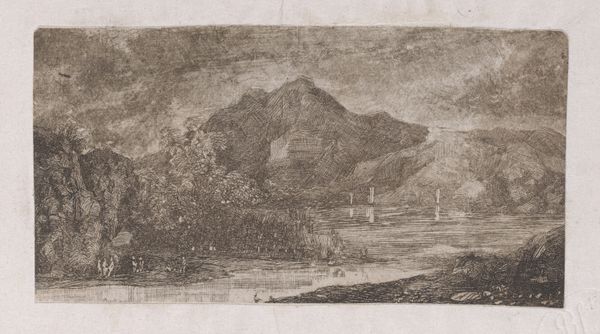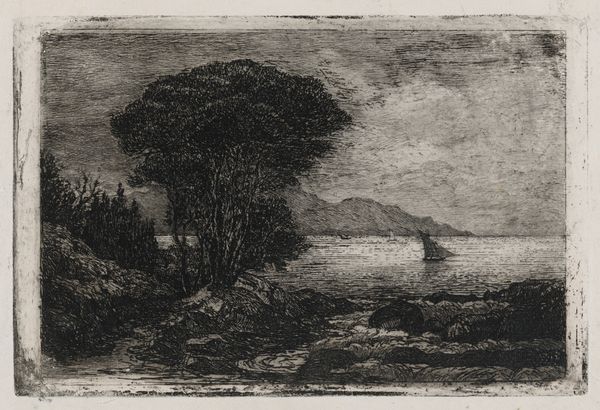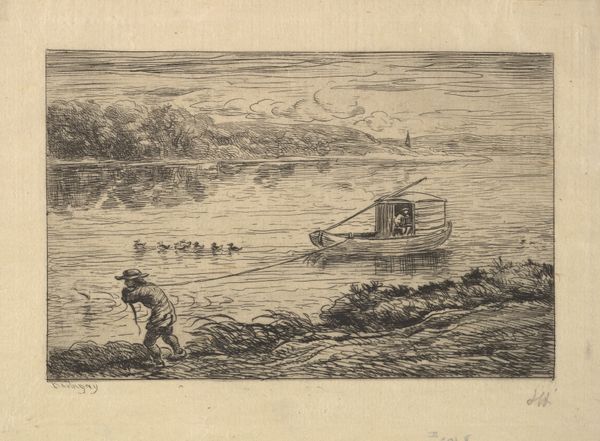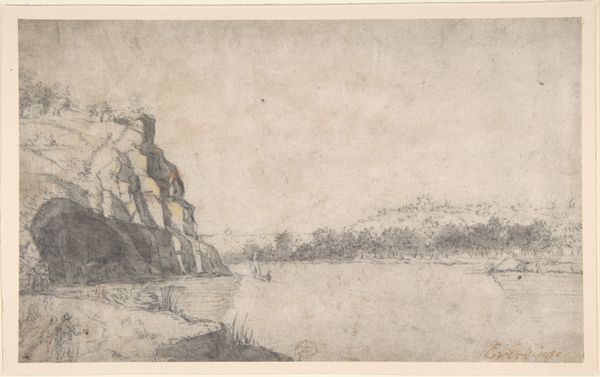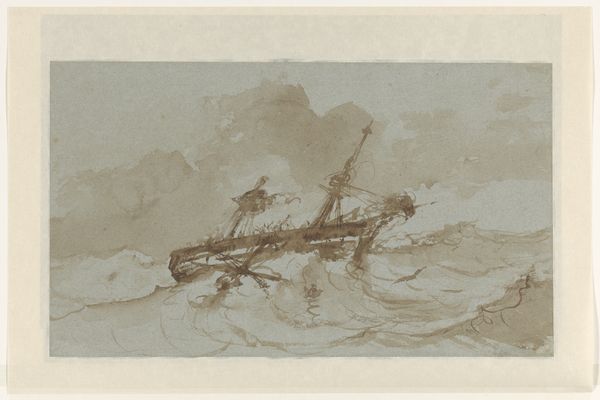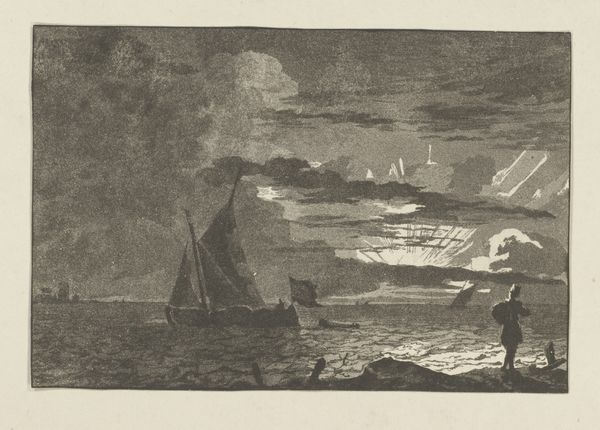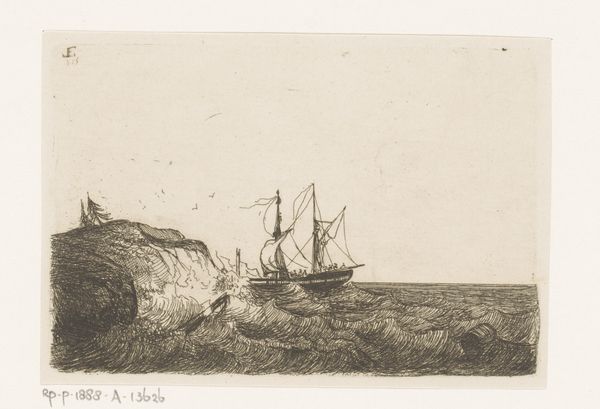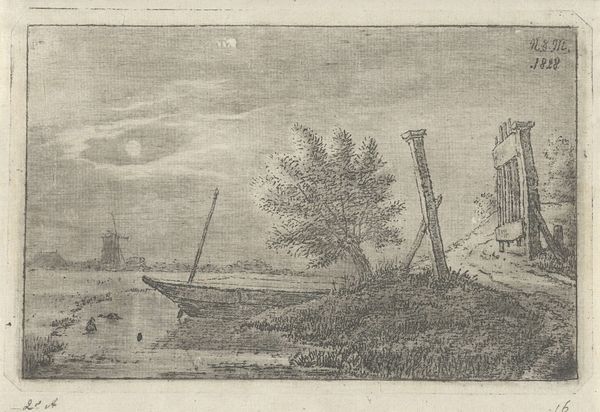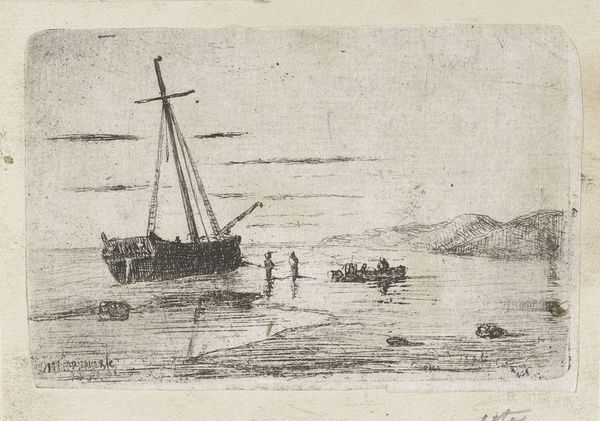
Dimensions: sheet: 20.32 × 29.53 cm (8 × 11 5/8 in.) board: 26.04 × 34.93 cm (10 1/4 × 13 3/4 in.)
Copyright: National Gallery of Art: CC0 1.0
Curator: Here, we have "Stranded," a pencil drawing created en plein-air by William Morris in 1875. Doesn't it evoke a quiet sense of isolation? Editor: Absolutely, I get a rather melancholic feeling looking at this scene. It’s monochromatic tones really lend themselves to a somber mood. A ship abandoned, swallowed by sand, and overcast by those hills... what do you make of it? Curator: Well, thinking of the late 19th century art world, romanticism and realism are at play here. I am taken by how such a bleak landscape captures a sublime beauty. But consider the cultural implications: shipbuilding was on the rise. Maybe the work explores the fleeting relationship between man and nature? The failed relationship is physically manifested with that lonely vessel. Editor: You know, for an artist deeply inspired by medievalism and craftsmanship, it’s interesting to see Morris capture a grounded moment. His landscapes are rare, after all. I find myself drawn to the texture in this. The roughness of the beach is palpable even with limited shading and form. Curator: Right? It’s almost a paradoxical landscape. Morris clearly valued the tactile process of creation as much as the picturesque ideal. This piece showcases his ability to observe, in reality, not just conceptualize through a dream. It acknowledges and captures the socio-political realities surrounding industry and technology during that era. Editor: True, it almost begs for the question – does a pencil drawing made outdoors speak louder than one crafted within studio walls? Something to meditate on as you move to the next work. Curator: It certainly makes you consider the artist's relationship with the external world. There are always lessons to glean when reflecting on moments of being caught between creation and its eventual destruction.
Comments
No comments
Be the first to comment and join the conversation on the ultimate creative platform.
